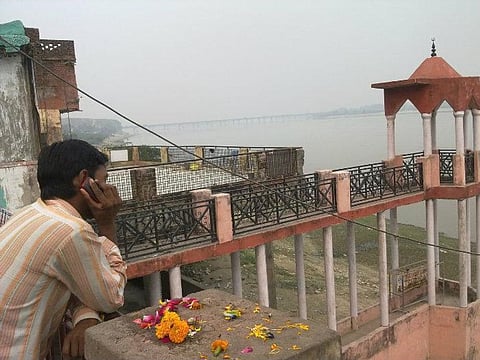
- Home
- NG Hindi
- India
- World
- Politics
- Sex & Relationships
- Entertainment
- Culture
- Lifestyle
- Economy
- Sports
- Sp. Coverage
- Misc.
- NewsGram Exclusive
- Jobs / Internships

By Rituparna Chakrobarty
India is one of the places in the world were history and the present overlap. There are many cities in India whose past goes back millenniums into history. One such place is Jajmau.
An ancient village, established around 2700 years ago on the banks of river Ganga, it is now a suburban part of Kanpur. Jajmau is a treasure trove for historians who can find traces of history from the era of Mauryas, Kushanas and Guptas.
Importance of Jajmau in History
Jajmau is believed to be a kingdom of Emperor Yayati. Puranas and Khands have references of Kanpur Jajmau at various instances. According to Hindu mythology, Yayati was the ancestor of Pandavas.
According to Uttar Pradesh State Archaeological Department, the excavation carried out at the Jajmau mound also yielded the remains of Mauryan dynasty like ivory seals with Vasalas inscribed in Brahmi, human figurines, animal figurines, bangles, mud bowls, terracotta statues and many other things. The artifacts have been kept in the museum for their protection and maintenance. Several copper coins from the era of 1500-1600 AD were also discovered from the excavation of the mound.
The first excavation was done under the supervision of Madan Mohan Nagar, ex-director of Uttar Pradesh State Archaeological Department.
Ram Vinay an official of Uttar Pradesh State Archaeological Department told NewsGram, that the excavation of Jajmau not only showed the remains of Mauryan period(600BC), but also Singha period 1st Century AD, Kushana period 2nd century AD, Gupta dynasty 5-7 century AD followed by medieval
period.
In 2006, during the widening of national highway, the second excavation was done and Ram Vinay was the supervisor at that time, a salvage operation was started to document and study the archaeological
remains embedded within a portion of the mound.
During further excavations, Black and Red ware pottery was found along with a hoard of 700 silver punch-marked coins bearing images of Sun, Crescents and trees on them. Also found were terracotta wares and mud and baked bricks from Mauryan and pre-Mauryan dynasties. Charcoal finds which have been radio carbon date back to 1300-1200BC.
Some ruins have been left undisturbed to illustrate construction and layout. The gaps between the houses imply a drainage system whilst there is evidence of proper water supply to the houses. Artifacts recovered from the site are housed in Kanpur Sangrahalaya Museum.
Jajmau: on religious ground
Situated in Jajmau is the temples of Siddhanath and Siddha devi, that reason why it was earlier known as Siddhapuri. Besides, there is also a mausoleum of Makhdoom Shah Ala-ul-Haq. Makhdoom Shah was renowned Sufi saint, who believed in the idea of secularism and preached it all his life. In the year, 1358, Feroz Shah Tuglaq built the tomb of Makhdoom Shah Ala-ul-Haq. In 1679 AD a mosque was also built by Kulich Khan.
Jajmau today
In the present Jajmau is one of the largest hubs of leather industries, and generates Rs.15000 crores of revenue every year. It also accounts for 30% of Indian leather export. No wonder Jajmau is widely known as 'Leather Cluster of Kanpur'.
